|
protected from tick-born diseases. Check out this great information about how to look out for ticks and how to protect yourself here. What now? If you do happen to get a tick on you. It's important not to panic. It's important to stay calm, and get the little bugger off! Before you go reaching for those tweezers, make sure you're aware as to how to best remove and attached tick to better decrease your chance of contracting a disease or get an infection from the attachment site. How to Remove a Tick Step 1. Gather all your necessary supplies:
Step 2. Get a Clear View of the Tick Be sure that you can comfortably see what you are doing and that you have a good view of the tick you are trying to remove. If the tick is in a hard to reach area, be sure to enlist the help of a friend in order to avoid improperly removing the tick. Step 3. Get a Hold of the Tick Take your tweezers--a set of fine-tipped tweezers are highly recommended--and gently grab hold of the tick as close to the skin as possible. Step 4. Remove the tick Lift the tick to a 90 degree angle away from the skin. Use a gentle and even pressure to pull the tick out from it's hold. It is IMPORTANT that you DO NOT twist or yank the tick from your body. Doing so could result in leaving the tick's mouth attached to your body. The tick wants to stay, and its saliva can act as cement of sorts. The tick attaches itself really well, and it makes removal all the more difficult. Patience and a steady hand are key. Step 5. Clean Up You will want to be sure to clean the area thoroughly. Use the alcohol or warm, soapy water to cleanse the area. Step 6. Disposal
You will need to kill the tick by placing it in rubbing alcohol. Then you can flush it down the toilet or wrap it tightly in tape and throw out. You can also choose to have the tick analyzed to see if it carries any diseases. For this you will need to keep the tick alive, and store it in a container for testing.
1 Comment
Summertime. South Carolina. Ticks.
Often these activities include hiking, camping, spending time outdoors--but before you plan your last summer excursion, you need to think about what may be hiding and waiting to put an end to any fun you might be planning. Ticks and Disease Ticks are parasites that attack from the outside of the body. These pests require a blood meal in which to survive. This type of contact between a tick and it's host contributes to the spread of disease from the tick to the host. Not all ticks transmit diseases, but taking precautions is key in protecting yourself, your children, and your pets from tick borne diseases like Lyme disease, Ehrlichiosis, Southern Tick-Associated Rash Illness(STARI), and Rocky Mountain Spotted Fever. When diagnosed early, tick borne diseases are very treatable. Diagnosis and early treatment is key. Lyme disease is the most common disease transmitted by ticks reported on an annual basis with an increase of over 80% of reported cases from 2004 to 2016 according to the CDC. Lyme disease is a bacterial disease that affects muscle strength, can cause arthritis, rashes, severe headaches, and possibly inflammation of the brain. While Lyme disease is one of the most common tick-born illnesses, Rocky Mountain Spotted Fever is the most deadly. The Rare but Deadly Rocky Mountain Spotted Fever
Reported cases of the rare but deadly Rocky Mountain Spotted Fever have been increasing over the past several years with one reported death in Wisconsin so far this year. Veterinarian offices are reporting an increase of cases in dogs, and pediatrician offices have treated cases in children as young as 5. Know What to Expect and Where to Expect It
Dogs and other small animals are only 8-12 inches off the ground and like to lay around in grassy areas which makes them a prime and easy target. How You Can Protect Yourself The fear of tick-born illnesses shouldn't deter you from enjoying yourself in these last few weeks of summer. Here are a list of things you can do to stay on the safe side: 2. Daily Tick Checking: It's a great idea to check yourself daily for ticks that might be climbing upwards. If a tick hasn't latched on, removing it before it has a chance to is by far the safest way if preventing the transmission of tick-born diseases. It's important to check those spots that aren't as visible with the naked eye:
4. What you Wear Matters: Wear long-sleeved shirts and long pants. If you wear lighter color clothing, it will make it a lot easier to identify ticks on your clothes.
Take time and enjoy your summer. Be mindful of your surroundings, and always check yourself and your pets. Remember, wash any possibly contaminated clothes before simply throwing them in a hamper. Not all ticks carry diseases but tick removal is important. The longer a tick stays attached, the greater your chances of having a tick-born disease transmitted. If you fear that your yard may be a tick haven, don't hesitate to give us a call at Champion Pest Management. We can come out and assess your yard situation, and discuss a treatment plan that best suits your needs, your family's needs, and your pets' needs. 843.860.4791
[email protected] Spring is here, and before we know it the weather will be warmer and wetter, and we all know what that brings:
MOSQUITOES! Have no fear! Champion can take care of those pests for you, and let you keep control of your own yard. Currently, we are offering a FREE MOSQUITO treatment to any new pest control customer with an annual pest control agreement. Happy New Year! It's time for new resolutions, new promises, new changes, and new commitments. In the pest control industry, these new commitments come in the form of a commitment to your home, to your health, and to your peace of mind. So, what exactly does that look like? It looks like making the decision to be proactive in the protection of your home from pests. Here at Champion Pest Management, we believe it's time to make some New Year's Resolutions that are easy to stick to because we're here to do the heavy lifting. Benefits to Regularly Scheduled Professional Pest ControlYour Health Believe it or not, but the number one reason you should schedule regular professional pest control is to keep up with your overall general health. Cockroaches, rodents, mosquitoes--all of these pests (and more) carry diseases which can spread to you and your family causing illness. A regularly scheduled pest control appointment with a trained and licensed pest control company like Champion Pest Management is crucial in keeping these unwelcome visitors out of your home and your yard, and therefore keeping your immune system just how you like it: strong and healthy. The Value of Your Home
The Risks of DIY Pest Control There are quite a few homeowners looking to save a dollar or two and take the chance with DIY pest control solutions. While you may feel as though you're saving a few bucks, this could be costly and ineffective in the long run. Without proper training and knowledge, a homeowner runs the risk of misusing over-the-counter pesticides. A trained technician knows where and how to best apply professional grade pest control solutions and can take the guess work out of DIY pest control. A trained professional can save you time, and save you from exposure to unnecessary and misused pesticides. Being Proactive Rather than Reactive
I promise, keeping pests out of your home is way more effective than trying to kick them out once they've invited themselves inside. Many people feel as though a professional service is no longer needed once they no longer see bugs with their own eyes. This isn't entirely true. It's the regular treatment that is giving the homeowner that peace of mind. Get rid of your pest control service, and in about 3 months, you may be wishing you still had us around. Champion is Always Here on Your Side No matter what you decide, or when you decide it. Champion Pest Management will always be here to help fight that good fight. Our trained technicians will help guide you through the best course of action for your home, and we will give you that peace of mind that we're all looking for when it comes to New Year's Resolutions and changes. Call A Champion Today 843.860.4791
Travel is an essential part of the holidays, and well, your luggage is the most common and preferred method of transportation for bed bugs. Anywhere there may be people, there may be bed bugs. So what can you do about keeping bed bugs out of your luggage while you're on your holiday travels? Let's learn about some basic steps you can take to identify bed bugs as well as cut down your chances of carrying them home with you. Steps you Should Take Before Unpacking 1. Keep the luggage off the bed. When you first enter your hotel room or guest room, do not head to the bed firs with your luggage. If there are bed bugs present, that is a really quick way of increasing your chances of bringing them home with you. Your best bet is to head to the bathroom first. Place your luggage in the bath tub while you prepare to check the room. No bathroom? See if there is a metal luggage rack you can rest your bags on before unpacking. Staying at a relative's home, and you have neither a bathroom or a luggage rack? Wrap your luggage in plastic. It's easy to find plastic luggage covers online.
3. Begin a bed inspection. Go to the bed and pull back all of the covers all the way down to the mattress. It is really helpful to always pack a small flashlight in your luggage to use for your inspections. Take the flashlight and inspect the mattress--especially, around the seams. If you're using a flashlight, check for anything moving. The bugs don't like the light, and they will try to move away from it. If you see reddish brown spots on the mattress or clusters in the corners, you may have found signs of a bed bug presence. 4. Move beyond the mattress. It is key to not only check the bed, but the headboard, the tables, and any furniture in the room. If you're able to move the furniture, do so. You'll need to check behind it. Look under the phone, alarm clock, and lamps. Be sure to use your flashlight in these areas too. 5. Bag up any clothes that need to be laundered. Throughout your vacation and definitely before packing your suitcase, secure any clothes that have been worn into a sealed plastic bag. Bed bugs are drawn to your scent, and sealing up your clothes is a great way of preventing a ride home for these pests. 6. Report any findings immediately. If you're staying in a hotel, be sure to immediately report what you have found to the staff. It is safe to stay in the hotel. Bed bugs found in one room does not mean that they are in all rooms, nor is it a testament to the cleanliness of the hotel. If you do to stay, be sure that your new room is not adjacent to the room with the bed bugs. One good rule is to try and go two floors up or down (if possible). The important thing to remember during your holiday travels, is to keep a cool head. As long as you know what you're looking for, you can prevent bringing home bed bugs. Remember, bed bugs are not known to transmit diseases to humans. However, they are a hugs nuisance. Keep a cool head, and know how to stay proactive. If you do find that you may have brought home some unwelcome visitors after your holiday travels, have no fear. Give us a call at Champion Pest Management. We will come to your home, complete an inspection and discuss the best options available for keeping your home bed bug free. 843.860.4791
Halloween is tucked away. We've all slept off the turkey comas. Black Friday, Small Business Saturday, and Cyber Monday have all come and gone. It's not quite December 1st, but maybe even for the Scroogiest of us all it's time to sit back and usher in the Christmas holiday. With that, comes, for many, the hunt for the perfect Christmas tree. Now, a Christmas tree entry isn't exactly what you'd expect from a pest control company blog, but believe me, the choices you make about your tree could greatly affect your need of an exterminator this Holiday season. The Christmas tree is probably one of the most iconic Christmas image, but it's definitely one that is not safe from debate: Douglas or Fir. Homemade ornaments or Elegant themes. Let the kids lend a hand or Move all the ornaments after they've gone to bed. White lights or Colorful lights. One tree or Two. And of course..... Real or Fake With over 35 million trees harvested each year and only about 10 million artificial trees sold a year, it's not too soon to rule out the popularity of the live tree. I mean come on, it's an over 1 billion dollar industry! Let's talk a little though about what you should know about those amazing live trees after you strap them to the top of your car and head home singing carols along the way. As with bringing anything involving nature into your home, when buying a live tree, you run the risk of opening your doors to a possible 25,000 unwelcome Christmas guests. Okay, Okay. I'm not saying all this to scare you, or to send you running to your local box store to purchase a pre-lit, artificial tree. Believe me, I'm not trying to ruin any traditions. You simply cannot replace that magical smell of a fresh cut tree.
Aphids
Mites
While aphids and mites are just a couple of pests possibly trimming your tree this year. You should be on the look out for other signs of bugs as well. Adelgids (these make your tree look as though they have a slight dusting of snow on it--festive right?), Bark Beetles, and even Praying Mantises are known to be found in evergreens. A Christmas tree filled with pests may not quite be what's on your Christmas list, and the thought of bringing home a bounty of bugs may leave you a little Bah Humbug, but don't let these thoughts bring you down. Be sure to check your tree thoroughly before bringing it inside your home. a goof idea would be to place it in your garage for a few days on a white sheet, and shake it vigorously. Just think, there are always the stockings to hang by the chimney with care. No fear though. Champion Pest Management is here if you do happen to have a few extra visitors this holiday season. Don't be afraid to give us a call. 843.860.4791
Charleston, SC has once again been voted the #1 city in America to live and #2 in the world. With accolades like this, comes increase travel. With increase travel comes unwanted visitors in the luggage of new visitors to Charleston. It's important to stay mindful and check your luggage and your room when traveling. Bed bugs are not fun to be around. While this report in the link attached is about Phoenix, it could very easily be Charleston or any city for that matter. One common mistake if the idea that bed bugs are only associated with filth, and as long as you stay clean, you're safe. This is not the case at all. In fact, bed bugs themselves are fairly clean creatures As long as you're breathing out Carbon Dioxide, you're a target for bed bugs no matter how clean you keep it. Surprisingly, bed bugs do not carry any known diseases. However, what they do is tear down quality of life while infesting your home and feasting on your person. If you suspect your home might be infested, please give Champion a call for an inspection. I highly recommend reading the article written by PCT on the recent bed bug reports in Phoenix. 843.860.4791
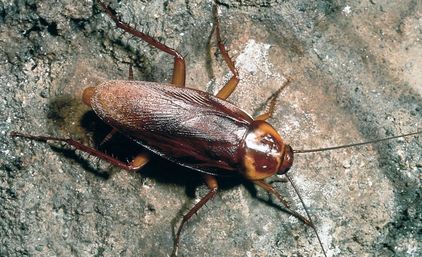 Photo Credit: Kansas Department of Agriculture , Bugwood.org Photo Credit: Kansas Department of Agriculture , Bugwood.org In the last blog post, we went into great lengths about one of the smaller species of roaches: the German Cockroach. In this post, we're going to be focusing on the largest roach nuisance in our area: the American Cockroach. As far as size, the American Cockroach is about three times the size of the German. These roaches can get to be 1 1/2 inches long! These cockroaches were introduced to America nearly 400 years ago by ships coming from Africa. The appearance of these roaches isn't for the faint of heart. With their size and reddish-brown coloring, they can be quite scary to look at. 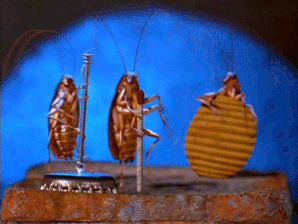 A few of you may remember that horrifyingly awful movie Joe's Apartment from the late 90s. The stars of that movie were the ever so disgusting American Cockroach. The setting of that movie was in New York City where a home infestation of that magnitude from an American Cockroach is more likely. It's colder in the northern states which is why it is where you're more likely to find these cockroaches indoors. The American Cockroaches are not a fan of cold environments, and in colder areas, they retreat to find comfort inside homes and buildings. These critters prefer climates that are warm and humid.  Cooper River Bridge, Charleston, SC Cooper River Bridge, Charleston, SC I know what you're thinking: "Did you just say warm and humid?" That's right...I did. Here in Charleston, SC, the climate is perfect outside for these American Cockroaches. In fact, you may even know them better as Palmetto Bugs or Waterbugs. These guys are the ones you see scurrying along the sidewalks and across your home's threshold. I know, I know. These are the ones that give you a heart attack and make you scream for your mommy. The euphemism of Palmetto Bug may sound quaint and of another world, but I assure you these roaches are just as disgusting as the German roaches infesting our southern homes. Research shows that these roaches potentially carry over 30 different types of bacteria and parasites around (including E. coli, Salmonella, and parasitic worms). Yikes! Pass the disinfectant!  The American Cockroach really prefers hanging out outside in the mulch beds around your house, sheds, wood piles, etc. Don't get me wrong, these guys will make their way into your house. If their food supply runs low, these guys will not hesitate take up refuge in your home. If need be, these roaches will travel 100s of feet from from their home in search of food. and when it comes to food, American Cockroaches are not picky eaters. The're even known to feast on the glue that binds books together. Typically, restaurants and warehouses are a more ideal environment and are hit harder than homes when it comes to these cockroaches. Often with warehouses and restaurants there are large doors left open, or entrances and exists that are frequently opening and closing. With such easy access, getting into these locations is no problem for the American Cockroach. 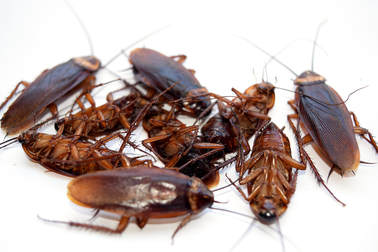 The life span of an American Cockroach is 2 years which is significantly longer than that of a German cockroach. Because of their longer lifespan, they don't have the need to reproduce as quickly as the German Cockroach. It takes nearly an entire year for one of these cockroaches to develop into an adult from an egg. Egg sacks are dropped and placed in protective locations about once a week, but the gestation time inside the egg can be one to two months. Temperature plays a role in the hatching process and can affect the length of the roach's gestational period. In a single year, a pair of American Cockroaches can have over 500 offspring under prime environmental conditions! If you fear that you may have an American Cockroach infestation, don't hesitate to contact us at Champion Pest Management. We will be happy to perform a free inspection and give you a quote for a pest control plan that is best for you and your home or business. 843.860.4791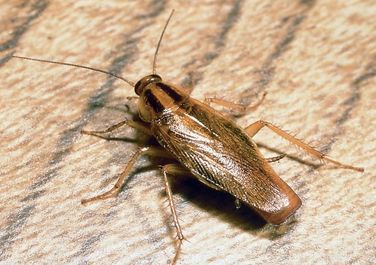 Photo Credit: Kansas Department of Agriculture , Bugwood.org Photo Credit: Kansas Department of Agriculture , Bugwood.org Cockroaches are just about the number one nuisance when it comes to pest control. The German Cockroach is the most common cockroach to encounter in the home. These roaches are brown in color with two distinctive darker brown lines running parallel down their backs. German cockroaches stand out, and more often than not, when a customer fears an infestation, it's probably a German infestation. Where Did They Come From?  Interestingly enough, the German Cockroach did mot originate in Germany. More than likely, this roach (like many others) originated in Southeast Asia. These roaches began to spread throughout the world as exploration and travel become more prevalent. With roaches being associated with filth and disease, the official name was probably given out of spite and meant as an insult. In reality, the only thing German about this roach is nothing at all. In Germany, this roach may be referred to as a Russian Roach or a French Roach. No matter the name, these little guys are spread world-wide and infestations can get out of hand quickly. Why are German Cockroaches So Far Spread? The German Cockroach is super small in relation to other roaches. These little guys don't get to be too much larger than half an inch in length. With this small size comes the ability to hide in small spaces. German cockroaches can easily stow themselves away unnoticed. These guys are amazing hitch hikers which allows them to be so far spread, and truly, a worldwide problem. With the growth of human civilization comes the growth of the German Cockroach population. German Cockroaches don't fair too well without the human race. But I'm a Neat Nut. Surely, those Germans Won't be Found in My House Indeed, a dirty home can definitely be a source and potential breeding ground for German cockroaches; however, filth isn't necessary. In reality, all a German Cockroach wants is water, food, and warm place to call home. What better place than in your kitchen? These roaches prefer the feeling of wood as their resting spot which is one reason your cabinets and are prime real estate. Much like Asian Cockroaches, the German Cockroach is drawn to warm areas close to a water source. When I say warmth, you should think kitchen appliance.  Toasters are an excellent food source for the beginnings of an infestation. These areas are warm, provide PLENTY of food due to overlooked crumbs, and are very often kept on counters not far from a water source. It doesn't matter just how tidy you keep your home, it doesn't take much to to make a feast for these creatures. The smallest of grease splatters can feed a handful of German Cockroaches for at least a month. While they don't require filth to make a home in your home, leaving a pizza on the counter sure makes life a little easier for them. I've Only Seen One or Two; I Don't Have a Problem Like most cockroaches, the German Cockroach is nocturnal. They prefer to be out and about when the sun is down and the lights are out. So, if you're seeing one or two out on the counter during the day, you can almost bet there are plenty more hiding away. Why So Many? German cockroaches are the fastest breeding cockroaches. One female cockroach could quickly become tens of thousands in as little as a year! I guarantee though, you're not going to find just one female chilling in your kitchen. Pregnant German Cockroaches like to huddle and stick together. German cockroaches are very protective of their egg cases (called the Ootheca ). Several species of Cockroaches secure their egg sacks to surfaces out of danger, whereas the German Cockroach goes the extra mile for safety and carries the ootheca with her until it's time to hatch. These females will carry their egg casings for nearly a month. Each egg sack can contain 35-50 eggs inside. When it's closer to hatching time, the female will drop the egg casing in a secure location. To insure that the ootheca isn't released too soon (resulting in the death of the eggs), the female German Cockroach will stay extremely still for a few days before it's time to hatch. In her adult lifetime (around 30-40 weeks), the German cockroach can produce 6-8 egg cases resulting in a possible 400 offspring. That's 10 new roaches EVERY week from one female. In a year, that single female could be the cause of almost half a million roach children, grand children, and great grand children!! Okay, So I Have a German Cockroach Infestation. Can't We Just Live in Peace?  German cockroaches can single-handedly render all the food in your home as useless. As these roaches move around, they secrete a fecal material contaminating everything they touch. Guess what? This fecal matter also produces a pheromone that brings in MORE roaches. These secretions lead to allergic reactions and disease ridden bacteria covering your kitchen, bathroom, and home. In extremely bad infestations, these nasty roaches have been reported to BITE humans as well as feed off of food particles left on their faces while they sleep!! German cockroaches are nasty, vile, and disgusting creatures, but they can be stopped. If you fear that your home may be under attack by German Cockroaches, give us a call at Champion Pest Management. We will come out, take great care of you, and return your home to its proper owners. 843.860.4791
|
About UsChampion Pest Management is a locally owned, family run, pest control company operating in Charleston, SC and the surrounding areas. Archives
February 2023
Categories
All
|
|

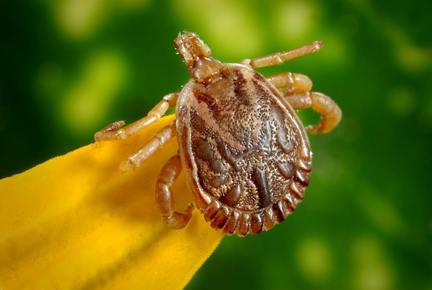


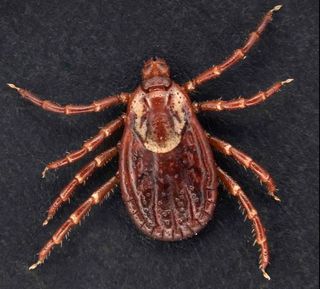






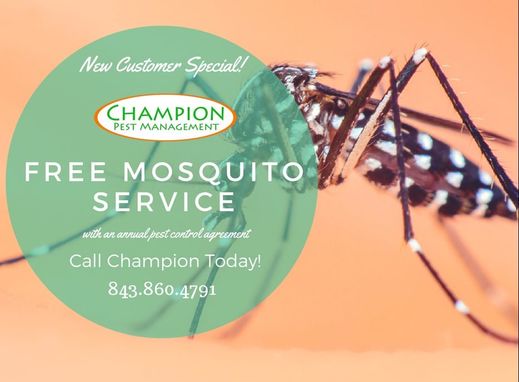



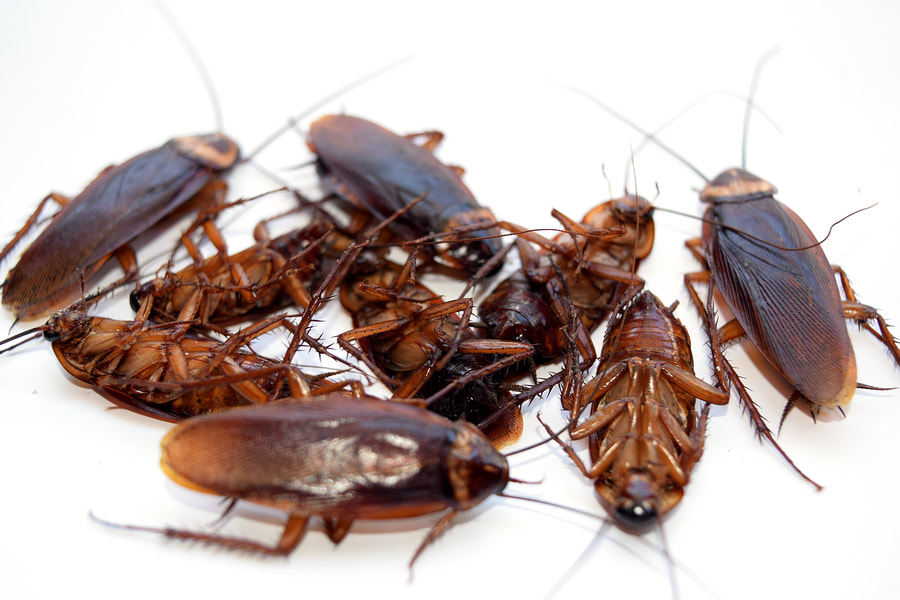




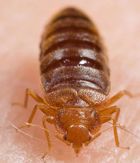
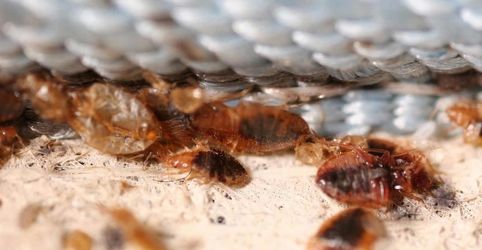





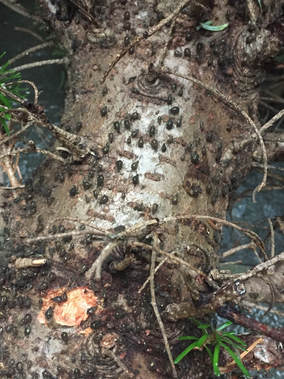
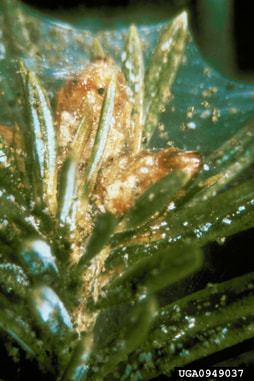



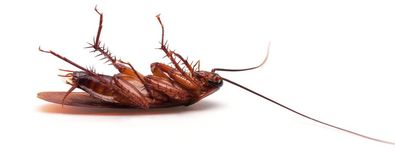

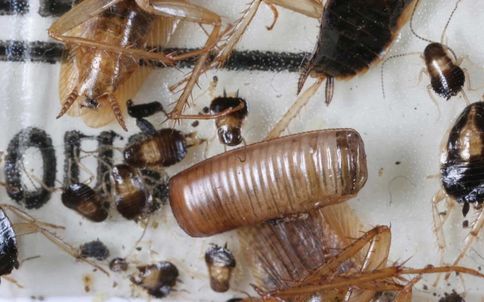

 RSS Feed
RSS Feed


